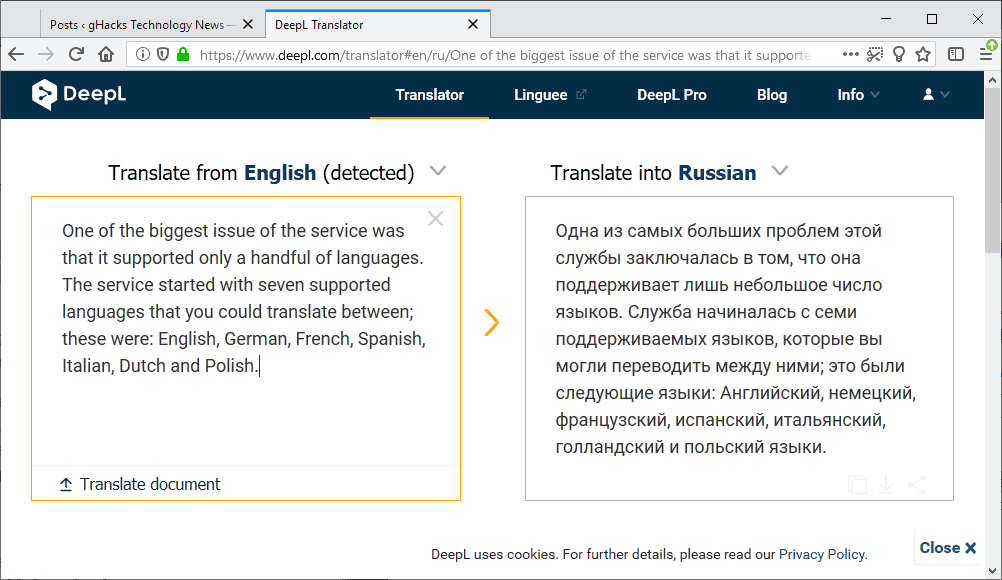by Martin Brinkmann on December 05, 2018 in Internet – No comments
We reviewed the translation service DeepL in 2017 when it came out and found it to produce — on average — better translations than established services such as Google Translate (Mozilla is working on implementing it in Firefox) or Bing Translate.
One of the biggest issue of the service was that it supported only a handful of languages. The service started with seven supported languages that you could translate between; these were: English, German, French, Spanish, Italian, Dutch and Polish.
The developers of DeepL added a useful document translation feature to the service in 2018 but did not add support for additional languages to the service up until now.
DeepL announced support for two additional languages today. Users of the service can translate to and from Russian and Portuguese as of today. The two additional languages increase the number of supported translation languages to nine. The number pales against the more than hundred languages that other automatic translation services support but if the quality is better, and it seems to me that it is, you’d want to use DeepL whenever possible.

DeepL notes in the press releases that support for these two languages “provides half a billion more people” with translation support. The company promises that translation quality for these two new languages is as good as the translation quality of languages added previously.
In blind testing that compared our translations to those of other systems, DeepL’s Russian and Portuguese services consistently emerged as translators’ favorites.
Internet users can point their browsers to the DeepL homepage to use the translation service free of charge. Russian and Portuguese can be selected as source or destination languages, and translations to or from these languages are instantly provided.
DeepL promises that it plans to add more languages in the future but did not list any in the press release.
Closing Words
The addition of two new languages is a good step in the right direction and will certainly push DeepL forward even more. Nine languages is not the world, so to speak, though; there are still dozens of languages that tens of millions of people, or even more, speak.
It makes sense to pick widely used languages first and only release them once the quality level is high enough to justify a release.
I’d like to see Chinese and Japanese support next, what about you?
Now You: Which translation service do you use?